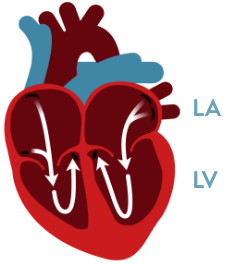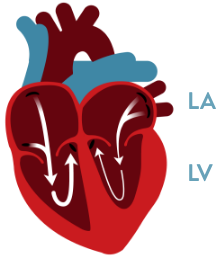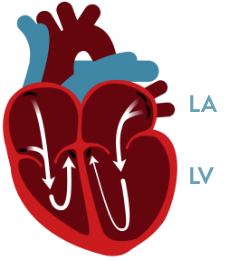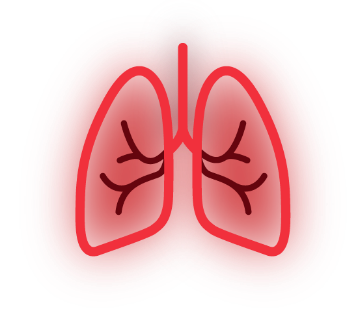Heart Failure
Understanding Heart Failure
Heart failure (HF) is a condition in which a heart is unable to pump sufficiently, or does so at higher filling pressures, to meet the needs of the body. One of the common symptoms is congestion, or build-up of too much fluid in tissues and veins. Specifically, congestion takes the form of water retention and swelling (edema), both as peripheral edema (causing swollen limbs and feet) and as pulmonary edema (causing breathing difficulty), as well as ascites (swollen abdomen) and liver enlargement.

6.2
million
people have heart failure in the US.1
1 in 5
The lifetime risk of developing heart failure2
TYPES OF HEART FAILURE
HF is generally divided into two different syndromes based on Ejection Fraction (EF), a measurement of how well the heart is pumping blood. Ejection fraction represents the proportion of blood pumped out of the heart during a single contraction and is given as a percentage, with the normal range between 50 and 75%.
| Healthy Heart | Heart Failure with Preserved Ejection Fraction (HFpEF) EF≥50% | Heart Failure with Reduced Ejection Fraction (HFrEF) EF<40% |
|---|---|---|
| In a healthy heart, the left ventricle (LV) and left atrium (LA) relax to fill with blood from the lungs. Once filled, the LV pumps the blood to the body. | HFpEF occurs when the muscles of the left atrium (LA) and ventricle (LV) become stiffer and are unable to relax normally. As a result, blood cannot easily exit the LA into the LV with each heartbeat, causing high pressure inside the lungs and left heart chambers. | HFrEF occurs when the heart walls become thinner and lose their ability to contract effectively. As a result, the heart cannot pump with sufficient force to push enough blood out of the LV and into circulation, causing high pressure inside the lungs and left heart chambers. |
 |  |  |

In all forms of HF, the high pressure in the lungs and left side of the heart cause shortness of breath and fatigue. These are common symptoms of worsening heart failure and often result in hospitalizations.
More than half of heart failure patients have HFpEF3
Patients with HFpEF are frequently hospitalized and often struggle with daily activities because of breathlessness, fatigue, and depression. For many, these symptoms drastically reduce their quality of life.

SYMPTOMS OF HEART FAILURE

Shortness of breath during daily activities

Having trouble breathing when lying down

Weight gain with swelling in the feet, legs, ankles, or stomach

Generally feeling tired or weak with limited or inability to exercise
HFpEF TREATMENT OPTIONS
Patients with HFpEF have few treatment options. Nearly all therapies that work for HFrEF patients have not proven to be effective in HFpEF patients. To date, treatment for HFpEF has primarily been limited to lifestyle changes and medications that aim to relieve symptoms.
Healthy Lifestyle Changes
- Maintaining or losing weight
- Being physically active
- Monitoring your blood pressure
Medications
- Diuretics to prevent fluid build-up
- Medicines to lower blood pressure or manage associated conditions
Despite healthy lifestyle changes and the use of medications, many patients
continue to experience symptoms and as a result, are frequently hospitalized.
BUT NOW, A NOVEL TREATMENT CALLED ATRIAL SHUNTING
IS BEING STUDIED TO HELP THESE PATIENTS.
- Virani SS, Alonso A, Benjamin EJ, et al. Heart Disease and Stroke Statistics-2020 Update: A Report from the American Heart Association. Circulation. 2020;141:e139-e596.
- Bui AL, Horwich, TB, Fonarow, GC. Epidemiology and risk profile of heart failure. Nature Reviews Cardiology, 2011;8(1): p.30.
- Owan TE, Hodge DO, Herges RM, et al. Trends in prevalence and outcome of heart failure with preserved ejection fraction. N Engl J Med. 2006;355:251-259.
